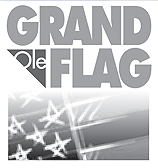 |
||||||||||||
|
May/June 2015 The Flag Code and Flag BY MARC LEEPSON
The answer is false. It was illegal to burn the American flag until 1989, when the Supreme Court ruled 5-4 in Texas v. Johnson that burning the flag is a form of symbolic speech protected by the First Amendment. In that precedent-making case, Gregory Lee “Joey” Johnson, a member of the Revolutionary Communist Party, had burned an American flag during a political demonstration at the 1984 Republican National Convention. He was convicted of violating Texas’s flag desecration law, fined $2,000, and sentenced to a year in jail. The Texas Court of Criminal Appeals overturned the conviction, ruling that Johnson was exercising his First Amendment right of freedom of speech. Texas prosecutors then appealed to the U.S. Supreme Court. The Court’s decision invalidated a 1968 federal flag desecration law, as well as the flag desecration laws in force in forty-eight states (all except Wyoming and Alaska). Congress then passed the Flag Protection Act of 1989. That law, too, was challenged, and the case again wound up in the Supreme Court, which upheld the 1989 ruling by a 5-4 vote. Those decisions led to a national movement to amend the U.S. Constitution to make flag desecration illegal. Proposed flag desecration Constitutional amendments have come up regularly in the House and Senate since 1990, but none have received the two-thirds majority of votes in both bodies needed to continue the amendment process. So, all flag protection laws have been off the books since 1990. However, the U.S. Flag Code is very much alive. It was adopted by the National Flag Conference in Washington, D.C., in 1923, and revised by the Second National Flag Conference the following year. The American Legion and the other organizations that took part in the conferences published booklets explaining the new code and distributed them by the millions. The Flag Code, however, did not become the law of the land until 1942 during World War II. On June 22 of that year, Congress passed a resolution, which President Franklin D. Roosevelt signed into law, adopting the code with several small changes as part of the United States Code. The Flag Code was slightly amended in December 1942 and several other times in subsequent years. The most recent amendments allow military veterans not in uniform to “render the military salute” when the flag passes and during the playing of the National Anthem. The U.S. Flag Code has ten sections and remains in effect today. However, even though the Code is a national public law, it does not provide for penalties for violations of its provisions. It serves, rather, as a set of guidelines for the proper use of the flag. There is no flag police. You will not get arrested for violating the U.S. Flag Code. For the complete, official code, go to the U.S Government Printing Office’s website.
|
||||||||||||
|
|
||||||||||||
|
||||||||||||
8719 Colesville Road, Suite 100, Silver Spring. MD 20910 | www.vva.org | contact us |
||||||||||||












 True or false: It’s illegal to burn the American flag.
True or false: It’s illegal to burn the American flag.